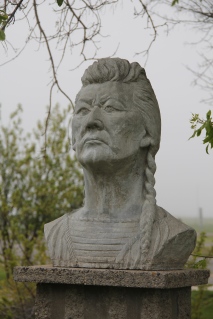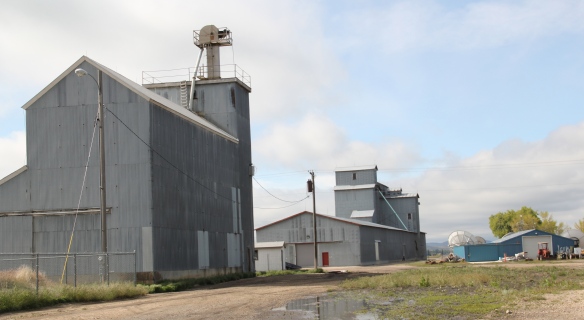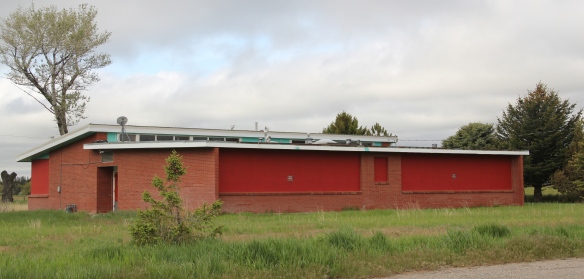 The Big Horn River is among Montana’s most famous as it winds its way out of the high mountains and empties into the Yellowstone River near the village of Custer. In the southern end of Big Horn County are two forts, one barely noticeable today while the other speaks to the radically different history of the Big Horn over the last 50-plus years.
The Big Horn River is among Montana’s most famous as it winds its way out of the high mountains and empties into the Yellowstone River near the village of Custer. In the southern end of Big Horn County are two forts, one barely noticeable today while the other speaks to the radically different history of the Big Horn over the last 50-plus years.
 The oldest is Fort C. F. Smith, established by the U.S. Army in 1866-1868 as part of its system of defensive installations to protect travelers along the Bozeman Trail. Named for Civil War general Charles Ferguson Smith, the post stood near the trail, as seen above, and also near a major Big Horn ferry, a location deemed almost 100 years later as perfect for a major federal dam and reservoir project. A peace treaty between the federal government and Sioux and Cheyenne Indians who had opposed the trail and the forts led to the abode constructed fort’s abandonment in 1868. Today, the site is marked–the Big Horn County chapter of the Federation of Montana Woman’s Clubs did so in 1933–but on private property. It has become a forgotten place within the state’s historic landscape.
The oldest is Fort C. F. Smith, established by the U.S. Army in 1866-1868 as part of its system of defensive installations to protect travelers along the Bozeman Trail. Named for Civil War general Charles Ferguson Smith, the post stood near the trail, as seen above, and also near a major Big Horn ferry, a location deemed almost 100 years later as perfect for a major federal dam and reservoir project. A peace treaty between the federal government and Sioux and Cheyenne Indians who had opposed the trail and the forts led to the abode constructed fort’s abandonment in 1868. Today, the site is marked–the Big Horn County chapter of the Federation of Montana Woman’s Clubs did so in 1933–but on private property. It has become a forgotten place within the state’s historic landscape.

Photograph courtesy of the National Park Service and its website on the Big Horn Canyon National Recreation Area.
The second Fort Smith is the name given to the government-planned town developed by the Bureau of Reclamation as part of its Yellowtail Dam project of the early 1960s. The project was part of the massive federal reordering of the plains landscape through the Pick-Sloan Missouri River Basin Program, an attempt to coordinate efforts between the Bureau of Reclamation and the Army Corps of Engineers. The Yellowtail Dam project received Congressional funding in 1961. The contractors included Morrison-Knudsen Company from Boise; Kaiser Company from Oakland, CA; Perini Corporation from Massachusetts, the Walsh Construction Company of Iowa, and the S Contracting Company from Butte. The contractors received almost $40 million for the project.
 Built from 1961 to 1966, Yellowtail Dam, named for Crow Indian Robert Yellowtail and standing at 525 feet in height, instantly dominated the surrounding landscape and turned the Big Horn Canyon into a huge lake some 72 miles along, that is managed as the Big Horn Canyon National Recreation Area.
Built from 1961 to 1966, Yellowtail Dam, named for Crow Indian Robert Yellowtail and standing at 525 feet in height, instantly dominated the surrounding landscape and turned the Big Horn Canyon into a huge lake some 72 miles along, that is managed as the Big Horn Canyon National Recreation Area.
The dam was part of an entirely new engineered landscape that defined this part of Big Horn Canyon and the Crow Indian reservation, with new ditches, the spillway, and a planned town for government employees.
 The town of Fort Smith was an obvious nod to the earlier army installation. But this was not a rectangle of adobe quarters; it was a typical 1960s suburban development dropped into the middle of the Crow Reservation. The streets are wide and circular, a concession to suburban models of planning but also taking advantage of the surrounding landscape.
The town of Fort Smith was an obvious nod to the earlier army installation. But this was not a rectangle of adobe quarters; it was a typical 1960s suburban development dropped into the middle of the Crow Reservation. The streets are wide and circular, a concession to suburban models of planning but also taking advantage of the surrounding landscape.
In keeping with other suburbs of the early 1960s, the houses mixed “contemporary” styles such as split-levels and the long, horizontal Ranch house. There were set-aside open
spaces for recreation and parks as well as a separate commercial area.
At the heart of the community was not a agency headquarters but a modernist styled public school–recognizing that children and their needs would help to define community among the different federal officials.
The second Fort Smith is a fascinating landscape documenting the federal impact on the Big Horn River in the middle decades of the 20th century–a basic reordering of nature that created new impetus for recreation in the county and impacted the county seat of Hardin with its own new wave of modernist styling. A suburb in the middle of nowhere–Fort Smith is among the state’s most distinctive places.





































































